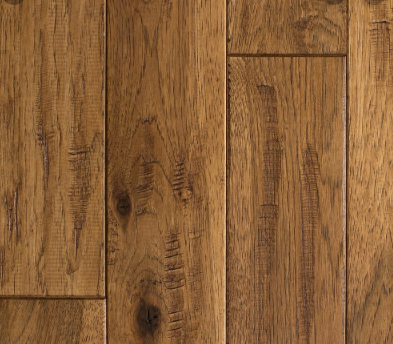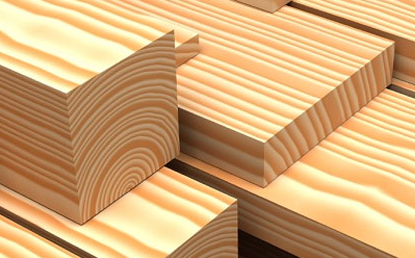Hardwood comes from angiosperm trees that are not monocots. Hardwoods are usually found in broad-leaved temperate and tropical forests. They Have vessel elements that transport water throughout the wood, under a microscope these elements appear as pores. Examples of hardwood trees include:
- Alder
- Balsa
- Beech
- Hickory
- Mahogany
- Maple
- Oak
- Teak
- Walnut

Softwood comes from gymnosperm trees which usually have needles and cones. Medullary rays and tracheids transport water and produce sap. When viewed under a microscope, softwoods have no visible pores because of the tracheids. Examples of softwood include:
- Cedar
- Douglas fir
- Juniper
- Pine
- Redwood

Key Difference
Anatomical Structure
The anatomical or internal structure of hardwood is more complex than softwood.
Resistance To Fire
Softwood is poorer than hardwood as far as heat resistance is concern. Softwood burns at a high rate.
Weather Resistance
If softwoods are modified or treated then these may become resistant to whether having an environmental impact. On the other hand, hardwoods are naturally resistant to whether having a less environment impact.
Texture
Hardwood is hard and heavy with a rough texture whereas softwood is soft and light with a fine texture.
Density
Most softwood have a comparatively lower density than most hardwoods.
Common Uses
Common uses of hardwood include:
- Hardwood flooring
- High quality furniture
- Boat-building
- Wooden toys
- Fixtures, fittings and moldings
Common uses of softwood include:
- Wood turning
- Production of paper pulp
- Outdoor decking (redwood)
- Woodwares like home cabins and furniture
- General construction, building frames
- Ladder and masts
Shedding of Leaves
Hardwoods shed their leaves over a period of time in autumn and winter whereas softwoods tend to keep their needles throughout the year.
Type of plant
Hardwood is the wood of dicot Angiosperms whereas the softwood is the wood of gymnosperms.
Tensile and Shear Strength
Softwood has a strong tensile strength and comparatively weaker shear strength. On the other hand, hardwoods have a good tensile and shear strength.
Medullary Rays
Medullary rays in softwood are indistinct whereas in hardwood the medullary rays are very much distinct.
Tracheids
The content of tracheids in the hardwood is less whereas the content of tracheids in hardwood is comparatively more.
Cost
Hardwood is comparatively more expensive than softwood.
Growth Rate
Softwood trees grow faster than hardwood trees.
Workability
Softwood is easier to curve whereas hardwood is difficult to curve.
Duration
Softwood has a shorter life cycle whereas hardwoods have a long life cycle, they can last for several decades.
Alternative Description
Due to the presence of vessels, hardwood can also be referred to as porous wood. On the other hand, due to absence of vessels, softwood can also be referred to as non-porous wood.
Fibres
Wood fibres are present in hardwood whereas are absent in softwood.
Resin Quality
Softwood is resinous in nature, it has a good and regular texture and a fragrant smell whereas hardwoods are non-resinous woods have acids.
Also Read: Difference Between Simple Permanent Tissue And Complex Permanent Tissue
Hardwood Vs. Softwood In Tabular Form
| BASIS OF COMPARISON | HARDWOOD | SOFTWOOD |
| Anatomical Structure | The anatomical or internal structure of hardwood is more complex than softwood. | The anatomical or internal structure of softwood is simple when compared to that of Hardwood. |
| Heat Resistance | Hardwood burns at a slow rate. | Softwood is poorer than hardwood as far as heat resistance is concern. Softwood burns at a high rate. |
| Resistance To Weather | Hardwoods are naturally resistant to whether having a less environment impact. | If softwoods are modified or treated then these may become resistant to whether having an environmental impact. |
| Texture | Hardwood is hard and heavy with a rough texture. | Softwood is soft and light with a fine texture. |
| Density | Most Hardwoods have a comparatively lower density than most hardwoods. | Most softwood have a comparatively lower density than most hardwoods. |
| Uses | Common uses of hardwood include: Hardwood flooringHigh quality furnitureBoat-building Wooden toysFixtures, fittings and moldings | Common uses of softwood include: Wood turningProduction of paper pulpOutdoor decking (redwood)Woodwares like home cabins and furniture General construction, building framesLadder and masts |
| Shedding Of Leaves | Hardwoods shed their leaves over a period of time in autumn and winter. | Softwoods tend to keep their needles throughout the year. |
| Plant Wood Classification | Hardwood is the wood of dicot angiosperms. | The softwood is the wood of gymnosperms. |
| Tensile And Shear Strength | Hardwoods have a good tensile and shear strength. | Softwood has a strong tensile strength and comparatively weaker shear strength. |
| Medullary Rays | In hardwood the medullary rays are very much distinct. | Medullary rays in softwood are indistinct. |
| Content Of Tracheids | The content of tracheids in the hardwood is less. | The content of tracheids in hardwood is comparatively more. |
| Cost | Hardwood is comparatively more expensive than softwood. | Softwood is comparatively less expensive than hardwood. |
| Growth Rate | Hardwood trees grow slower than softwood trees. | Softwood trees grow faster than hardwood trees. |
| Workability | Hardwood is difficult to curve. | Softwood is easier to curve. |
| Life cycle | Hardwoods have a long life cycle; they can last for several decades. | Softwood has a shorter life cycle. |
| Alternative Name | Due to the presence of vessels, hardwood can also be referred to as porous wood. | Due to absence of vessels, softwood can also be referred to as non-porous wood. |
| Fibres | Wood fibres are present in hardwood. | Fibres are absent in softwood. |
| Nature | Hardwoods are non-resinous woods have acids. | Softwood is resinous in nature; it has a good and regular texture and a fragrant smell. |
| Examples | Examples of hardwood trees include: AlderBalsaBeech HickoryMahoganyMaple OakTeakWalnut | Examples of softwood include: Cedar Douglas firJuniperPineRedwoodSpruceYew |
Comments are closed.